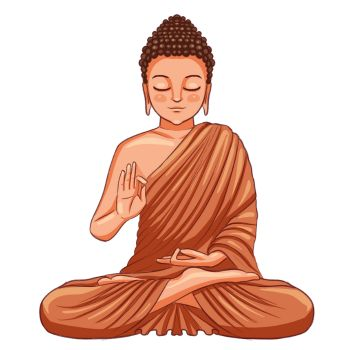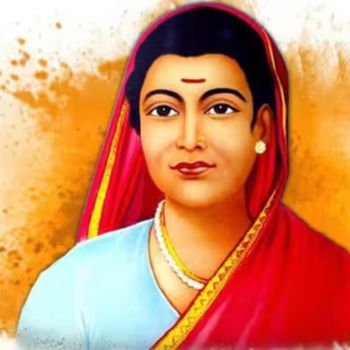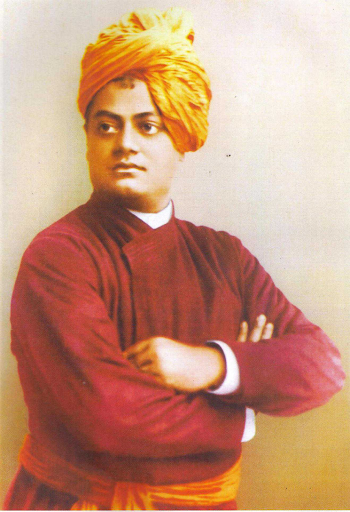
We Indians, use the word “Guru”
for teacher and is derived from two words, “gu” and “ru”. The Sanskrit root gu
means darkness or ignorance, and ru denotes the remover of that darkness.
Therefore, a Guru / a Teacher is one who removes the darkness of our ignorance.
The birth date of Dr. Sarvepalli
Radhakrishnan, 5 September has been celebrated as Teacher's Day since 1962. On
this day, teachers and students report to school as usual but the usual
activities and classes are replaced by activities of celebration, thanks and
remembrance. In some schools, senior students take the responsibility of
teaching in order to show their appreciation for the teachers.
Dr. Radhakrishnan was born on
September 5, 1888, in a middle class family in Tirutani. He was an outstanding
student and studied philosophy at Christian College, Madras. He taught at
various colleges in his lifetime from University of Mysore to University of
Calcutta. He was also appointed as the Vice-Chancellor of Andhra University,
Delhi University as well as Banaras Hindu University.
Dr Radhakrishnan, a teachers in
India who have transformed education. He was an Indian philosopher and
statesman also was the first Vice President of India (1952–1962) and the second
President of India from 1962 to 1967.
His philosophy was grounded in
Advaita Vedanta, reinterpreting this tradition for a contemporary
understanding. He defended Hinduism against "uninformed Western
criticism", contributing to the formation of contemporary Hindu identity.
He has been influential in shaping the understanding of Hinduism, in both India
and the west, and earned a reputation as a bridge-builder between India and the
West.
Sir Radhakrishnan was awarded
several high awards during his life, including a knighthood in 1931, the Bharat
Ratna, the highest civilian award in India, in 1954, and honorary membership of
the British Royal Order of Merit in 1963. He was also one of the founders of
Helpage India, a non profit organization for elderly underprivileged in India.
Sir Radhakrishnan believed that "TEACHERS
SHOULD BE THE BEST MINDS IN THE COUNTRY".
Some of the unforgettable teachers of India:
Valmiki:
The Indian history revered Valmiki as the Adi Kavi (first poet) for writing the epic Ramayana. Ramayana, written by Valmiki is composed of 24000 shlokas, and 7 kandas, including Uttara Kanda. It is consists of 480002 words. By penning down Ramayana, Valmiki imparts to the human population the invaluable teachings of loving and respecting your family, the importance of siblings relationship, differentiating between right and wrong, and the most important lesson of the victory of good over evil.
Gautam Buddha:
Born as Siddhartha in 480 BC, Gautama Buddha, renounced his royal life and earthly comfort to become a teacher. His most significant teaching was the Eightfold Path, a practical framework that included the right view, intention, speech, action, livelihood, effort, mindfulness, and concentration. This path is considered to be a roadmap to ethical living, inner peace, and ultimately, liberation. To spread his message across India and beyond, Buddha established a community of disciples. His teachings gradually gave birth to the religion of Buddhism. Hence, he is not just a historical figure but also a great teacher whose lessons remain relevant. His emphasis on mindfulness, compassion, and non-violence continues to inspire millions today.
Chanakya:
Chanakya was an ancient scholar, who is known for his intellectual way of living life. Apart from serving as a royal advisor to King Chandragupta Maurya, he has also served as a Political Science and Economics professor at the Takshila University. For Chanakya, nothing was ever above education. “Education is the best friend. An educated person is respected everywhere. Education beats the beauty and the youth,” is one of his famous quotes that prove that knowledge was everything to him. His teachings were forever recorded in his two books, namely, Arthsashtra and Chanakya Niti.
Savitribai Phule:
Along with her husband, started the first women’s school in Pune, Maharashtra, in the year 1981. She relentlessly fought for the right of education for women and raised her voice against inequality and injustice. Hence, she is also considered as the first Indian female reformist. After the successful run of her first girls’ school, she and her husband built many more in the state of Maharashtra. Savitribai served as a teacher and principal for many of those schools. She said and lived by these words: “Awake, arise and educate. Smash traditions- Liberate!” The University of Pune is known as Savitribai Phule Pune University, as a sign of respect towards her contribution.
Ramakrishna Paramhansa:
Ramakrishna Paramahansa, the well-known Hindu mystic, and seer are not what we may consider a traditional teacher. His fame as a Guru, however, comes from his infinite wisdom and from his ability to inspire Swami Vivekananda himself. Ramakrishna Paramahansa’s deep influence in the development of thought and society through the greater part of the 1800s cannot be denied. While Swami Vivekananda went on to establish the Ramakrishna Mission which still remains a stronghold of philosophical learning, his other disciples such as Rakhal Chandra Ghosh, Sarat Chandra Chakravarty, and Keshab Chandra Sen, became great thinkers and social reformers.
Swami Vivekanand:
He is known to take forward and preserve the culture of the Gurukul system, wherein the teachers and students live together, in India. A man known for his unparalleled intellect had founded Ramakrishna Mission, a monastery in which monks and his followers join hands to spread the awareness of Practical Vedanta. Like Chanakya, Swami Vivekanand instilled teachings of how to deal with testing times of life in his students. He also believed and constantly made his students believe that every human is born and blessed with infinite potential. His famous quote on this thought is, “Education is the manifestation of perfection already in men.”
Madan Mohan Malviya:
He believed that education was a tool for both individual empowerment and national progress. His most significant contribution is the establishment of the Banaras Hindu University (BHU), Asia’s largest residential university. Malaviya’s influence spread through the national consciousness as well. He popularized the motto “Satyameva Jayate” (Truth alone triumphs). Thus, his dedication to education earned him recognition as one of India’s finest educators. Generations of teachers and learners continue taking inspiration from him.
Rabindranath Tagore:
One of the greatest contributions of Rabindranath Tagore is the composition of India’s national anthem. He also founded the Visva-Bharati University in Shantiniketan. According to Tagore, learning existed beyond the four walls of a classroom. He emphasized activities like drama, music, and even tree climbing. His innovative approach to teaching made him a famous teacher in India and a pioneer in Indian education. Even today, he continues to inspire generations to learn with joy and embrace their individuality.
Dr. APJ Abdul Kalam:
Though widely known as a scientist and statesman, Dr. A.P.J. Abdul Kalam is also considered one of the best teachers in India. Despite achieving the prestigious titles of “Missile Man” and President of India, Kalam found immense joy in interacting with children. He delivered lectures across the country with utmost emphasis on equal access to education in both urban and rural areas. He also stressed the importance of basic amenities like water, playgrounds, and toilets for every student. His focus on values and ethics continues to inspire generations. His contributions are proof of how he touched countless lives without standing behind a formal podium.
Swami Dayananda Saraswati:
Swami Dayanand Saraswati was born into a religious family which fuelled his curiosity about the true essence of Hinduism. This led him to immerse himself in Vedic and Sanskrit studies, eventually becoming a renowned scholar. He founded the Arya Samaj and fought for equal rights for women, including education. He also established Gurukuls which focused on Vedas, Sanskrit, and religious knowledge. His deep understanding and ability to explain complex concepts in simple terms made him an excellent teacher. He attracted students from diverse backgrounds, leaving a permanent mark on Indian education and social reform.
Albert Einstien:
One of the most famous teachers from history and one of the brightest human mind, Albert Einstein, made his name eternal through his work. He started his career as a teacher in high school and went on to give the world the most famous mass-energy equation, general relativity, a theory of Brownian motion and many more.
Teachers in my life:
Primary and secondary studied in
DRR School, Davangere: Madam Yashodha, Madam Girija, Madama Rama, Madam Lalitha, Madam
Veena, Madam Ashalatha, Madam Shreedevi, Madama Shoba, Sir Vijendra Babhu, Sir Prabhu Pujar, Madam Veena, Madam Geetha, Madam HG Savalige, Madama Chandrama, Sir HN Pradeep, Sir SN Nagapani, Sir H
Basavaraj, Sir Manjunath, Sir Narshima Murthy, Sir M R Gopalkrishna, Sir SM Chandrappa, Sir T Mahesh, Madam RC Usha, Sir Nagraj, Sir Chandranna Shetty and many others.
Diploma in civil Engineering
studied in DRR Govt Polytechnic, Davangere: Madam Padmini, Madam Zubeda, Madam Geetha, Sir
Dharnendra, Sir Jayappa, Sir Ramachandra, Sir Sadhulla, Sir Basavaraj and many
others.
Mr Rajendra Gowda my first senior who thought the Digital land surveying.
Many many thanks to all Teachers who carved our future.......
Image courtesy... Thanks to google.com




















No comments:
Post a Comment